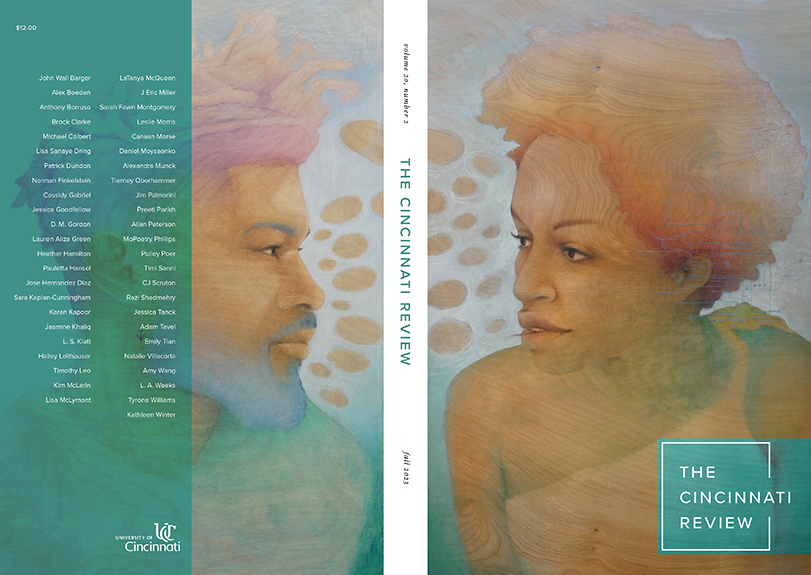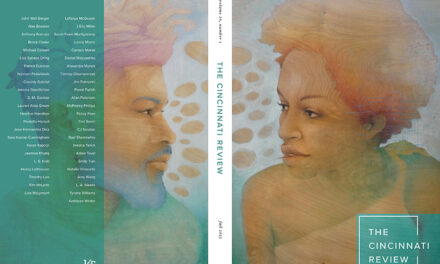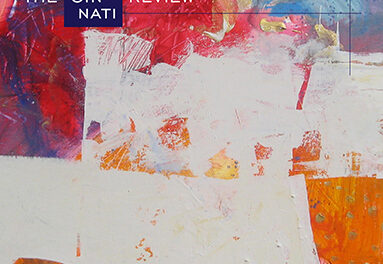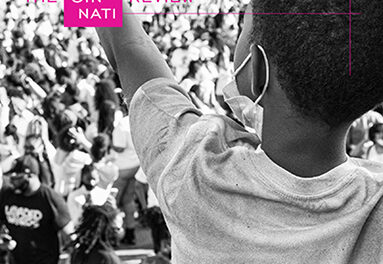You think summers in New York are humid now, but this is nothing compared to 1983. That year the air was full of heavy metals. Headless bodies in topless bars, the first AIDS vigil, candle flames seizing in a night that felt like wet fleece. When de Kooning’s Seated Woman got up and walked away from the Seagram Building, you got the sense something really dangerous was loose in our sweltering soup, our Manhattan.
* * *
July 27, 1983: Untitled (Girl) stands alone on Seventh Street staring at a dim reflection of herself. She is a work of mid-1950s figurative surrealism. You might expect languorous grace (such as: a melted clock sliding down a wall, such as: a skeleton curling to pick up a seashell), but her movements are jerky and disconnected, each one a separate act of defiance. She woke up one morning on the unswept floor of some Lower East Side gallery, having grown overnight the ungainly body of an adult woman; she’s only had eighteen months to get used to it. So, there’s one explanation. She is undervalued, the creation of a frustrated portrait artist whose point of view critics never seemed to grasp. So, there’s another. But I have seen other paintings who move like that, even famous ones, even ones who have been awake for decades. Could it be a reaction to those prebodied years of stillness, being looked at hard from all angles? Basically, are they self-conscious? Maybe I’m wrong, but you don’t see the Yellow Pages acting so stiff. Maybe it is something else, running through her like a raw nerve, that causes impatience to flare as she adjusts her frame in the plate glass, in the relentless summer humidity that is so bad for oil paintings. She yanks, and cracks erupt in her sidewalk.
The frame is new: Chinese padauk, the color evocative of iron-rich soil, therefore strength. Untitled (Girl) is attracted to the color, the smell, to any whiff of strength. She doesn’t know it, but she tracks strength like a hound. Her stomach feels like it’s been dunked in paint stripper when she thinks about how much she paid for the frame. It was for the interview, an investment. She wanted to look her best. She wanted to look as though she didn’t need the job but would take it if it interested her.
And now there are these cracks. She takes a pot of mastic jelly out of her purse and dabs some on. It does nothing but make her finger slick, then sticky, then stiff, leaving gray crumbstreaks of paint. The office is right through the door. She places her hand on the door.
She walks on.
* * *
1983: It’s a few years since works of art began showing a tendency to come to life. We’re past the very earliest days, when paintings were paraded through galleries like newborn deer, docents in the background trying to make sure they stayed in line and didn’t trip over each other. The walkouts have happened, the protests. You might remember some of the headlines: emancipation filings and insurance disputes, talk of unionizing, although that never came to much. Most former museum paintings don’t want to make a living on display. And there is no going back. By 1983 art is coming to your friend’s dinner party or standing in line behind you at the supermarket to buy bags of kitty litter. By 1983 you’re trying to muster the courage to talk to that dark windswept landscape at the bus stop and chickening out. We’re in the honeymoon period—no one has considered, yet, the problems involved in the restoration of living paintings.
* * *
After her aborted job interview, Untitled (Girl) meets a friend at a bar on Second Avenue and Fifth. She leans in so Still Life With Monstera can see the cracks.
They’re not too bad, Still Life tells her, but Untitled (Girl) snaps back that it’s only the lighting. Outside, they glare. The bar is dark with the furry obscuring yellow of beer signs, deserted in the early evening. Untitled (Girl) lights a cigarette and watches the orange glow creep toward her fingers. Smoking isn’t good for paintings, says Still Life.
Still Life With Monstera is from Canada. There’s a refreshingly tame air about her, in the naivete of her green brushstrokes, in her mass-produced beige slacks, the unapologetic curiosity of a tourist. She lives with the artist who painted her and talks about him a lot, maybe too much. She wanted to see more of the world, and he bought her a plane ticket. She is more straightforward than the art Untitled (Girl) usually runs around with. They tend to be experimental. Color fields. Motion paintings. Untitled (Girl) tells herself that Still Life With Monstera is a bore. At the same time, she feels relief; around her she doesn’t have to pose, push herself to certain limits. Her new frame is starting to pinch.
Still Life would like to hear more about the interview. Untitled (Girl) doesn’t know. She wasn’t paying close attention. They probably only asked her to come in out of curiosity anyway; it’s not like she has any experience. She laughs to give the impression that that was the reason she applied for the job in the first place—curiosity.
What does she mean? Again, Untitled (Girl) doesn’t know; she never knows what she really means; she’s not that kind of piece. She’s up for interpretation. Dull, dull, dull, she thinks. Her other friends would have been talking about something more interesting by now.
As though she has conjured them up to rescue her from the conversation, a whole exhibition comes into the bar. A couple are paintings Untitled (Girl) has never seen before. One is a metal sculpture of a goat. They order the cheapest wine; it’s not like they’re going to drink it, but they propose toasts, wet their fingertips, rub the rims of their glasses. Some of them smoke. Still Life With Monstera fades into the background.
Someone slides onto the stool next to Untitled (Girl): silvery tubes, postmodern text, an abstract. An acrylic. He asks if she’s having a good night. She reaches into her purse for another cigarette. He takes out a lighter and cups her hands in his.
Fair, she tells him. She knows how to be cool.
He tells her about the opening they’ve just crashed, trying to wake up the art. The Gondoliers sang opera. They were chased out by security guards.
Sounds like a scream, she says. His wool sweater retains the late afternoon smells of the street: muggy air, rotten fruit, cooling tar, and exhaust. Has she ever been to the Pier?
The Pier is an experiment. It’s all about life and meaning and maybe even reincarnation: past and future selves. It started when some homeless paintings broke into a derelict shipping depot. Now it’s an artists’ collective, and they are the artists. They call it the next generation. New York’s human critics come to watch; they go back to their lofts and write articles and essays about whether art can create new art, whether it is all a refraction of the original human artist’s vision. A new type of automatic creation. Untitled (Girl) hasn’t been there yet, but she’s heard about it. The truth is, she doesn’t want to go.
The acrylic is saying that she has an interesting texture. What’s his name again? Untitled (Girl) tries to remember. Something vague and European, like Les Gosses or La Guerra. He tells her it’s a shame she’s breaking down already, but that’s what happens with these soft oils.
Untitled (Girl) is shocked to realize she has another crack. This time it’s higher up, in her sky that looks like an ocean. It feels big, yawning, like it might swallow her finger whole if she tries to touch. The acrylic is saying that it’s brave of her, walking around like that, not caring what anybody thinks. Cheers to her.
He holds up his wineglass. Reeling, she has to hold hers up too.
When she leaves with him, she notices that Still Life With Monstera is there, sitting motionless in the corner of the bar. She waves as she slips out the door.
. . .











